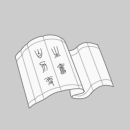
现代电子通信/国外高校电子信息类优秀教材
¥ 50 7.4折 ¥ 68 九品
仅1件
内蒙古赤峰
认证卖家担保交易快速发货售后保障
作者[美] 等著
出版社科学出版社
出版时间2004-03
版次1
装帧平装
上书时间2023-02-04
- 在售商品 暂无
- 平均发货时间 29小时
- 好评率 暂无
- 最新上架
商品详情
- 品相描述:九品
图书标准信息
- 作者 [美] 等著
- 出版社 科学出版社
- 出版时间 2004-03
- 版次 1
- ISBN 9787030127051
- 定价 68.00元
- 装帧 平装
- 开本 其他
- 纸张 胶版纸
- 页数 883页
- 字数 1308千字
- 【内容简介】
-
本书为国外高校电子信息类优秀教材(英文影印版)之一。
本书在每一章结合Electronic Workbench Multisim阐述了电子通信的关键概念。内容包括:幅度调制,单边带通信,频率调制,通信方法,数字通信,网络通信,传输线,波的传播,天线,波导与雷达,微波与激光,电视,光纤等。
本书可作为电子信息工程、通信工程专业本科生教材,也可作为相关领域工程技术人员的参考书。 - 【目录】
-
CHAPTER 1 Introductory Topics
1-1 Introduction
1-2 The dB in Communications
1-3 Noise
1-4 Noise Designation and Calculation
1-5 Noise Measurement
1-6 Information and Bandwidth
1-7 LC Circuits
1-8 Oscillators
1-9 Troubleshooting
1-10 Troubleshooting with Electronics Workbench Multisim
SUMMARY
QUESTIONS AND PROBLEMS
CHAPTER 2 Amplitude Modulation: Transmission
2-1 Introduction
2-2 Amplitude Modulation Fundamentals
2-3 Percentage Modulation
2-4 AM Analysis
2-5 Circuits for AM Generation
2-6 AM Transmitter Systems
2-7 Transmitter Measurements
2-8 Troubleshooting
2-9 Troubleshooting with Electronics Workbench Multisim
SUMMARY
QUESTIONS AND PROBLEMS
CHAPTER 3 Amplitude Modulation: Reception
3-1 Receiver Characteristics
3-2 AM Detection
3-3 Superheterodyne Receivers
3-4 Superheterodyne Tuning
3-5 Superheterodyne Analysis
3-6 Automatic Gain Control
3-7 AM Receiver Systems
3-8 Troubleshooting
3-9 Troubleshooting with Electronics Workbench Multisim
SUMMARY
QUESTIONS AND PROBLEMS
CHAPTER 4 Single-Sideband Communications
4-1 Single-Sideband Characteristics
4-2 Sideband Generation: The Balanced Modulator
4-3 SSB Filters
4-4 SSB Transmitters
4-5 SSB Demodulation
4-6 SSB Receivers
4-7 Troubleshooting
4-8 Troubleshooting with Electronics Workbench Multisim
SUMMARY
QUESTIONS AND PROBLEMS
CHAPTER 5 Frequency Modulation: Transmission
5-1 Angle Modulation
5-2 A Simple FM Generator
5-3 FM Analysis
5-4 Noise Suppression
5-5 Direct FM Generation
5-6 Indirect FM Generation
5-7 Phase-Locked Loop FM Transmitter
5-8 Stereo FM
5-9 FM Transmissions
5-10 Troubleshooting
5-11 Troubleshooting with Electronics Workbench Multisim
SUMMARY
QUESTIONS AND PROBLEMS
CHAPTER 6 Frequency Modulation: Reception
6-1 Block Diagram
6-2 RF Amplifiers
6-3 Limiters
6-4 Discriminators
6-5 Phase-Locked Loop
6-6 Stereo Demodulation
6-7 FM Receivers
6-8 Troubleshooting
6-9 Troubleshooting with Electronics Workbench Multisim
SUMMARY
QUESTIONS AND PROBLEMS
CHAPTER 7 Communications Techniques
7-1 Introduction
7-2 Frequency Conversion
7-3 Special Techniques
7-4 Receiver Noise, Sensitivity, and Dynamic Range Relationships
7-5 Frequency Synthesis
7-6 Direct Signal Synthesis
7-7 FM Communications Transceivers
7-8 Spread-Spectrum Techniques
7-9 Troubleshooting
7-10 Troubleshooting with Electronics Workbench Multisim
SUMMARY
QUESTIONS AND PROBLEMS
CHAPTER 8 Digital Communications: Coding Techniques
8-1 Introduction
8-2 Alphanumeric Codes
8-3 Pulse-Code Modulation
8-4 Digital Signal Encoding Formats
8-5 Coding Principles
8-6 Code Error Detection and Correction
8-7 Troubleshooting
8-8 Troubleshooting with Electronics Workbench Multisim
SUMMARY
QUESTIONS AND PROBLEMS
CHAPTER 9 Digital Communications: Transmission
9-1 Introduction
9-2 Background Material for Digital Communications
9-3 Bandwidth Considerations
9-4 Digital Modulation Techniques
9-5 Delta and Pulse Modulation
9-6 Time-Division Multiple Access (TDMA)
9-7 Data Transmission
9-8 Telemetry
9-9 Computer Communication
9-10 Troubleshooting
9-11 Troubleshooting with Electronics Workbench Multisim
SUMMARY
QUESTIONS AND PROBLEMS
CHAPTER 10 Net work Communications
10-1 Introduction
10-2 Basic Telephone Operation
10-3 Cellular Phone and PCS Systems
10-4 Local Area Networks
10-5 Assembling a LAN
10-6 LAN Interconnection
10-7 Internet
10-8 IP Telephony
10-9 Interfacing the Networks
10-10 Troubleshooting
10-11 Troubleshooting with Electronics Workbench Multisim
SUMMARY
QUESTIONS AND PROBLEMS
CHAPTER 11 Transmission Line
11-1 Introduction
11-2 Types of Transmission Lines
11-3 Electrical Characteristics of Transmission Lines
11-4 Propagation of DC VoLtage Down a Line
11-5 Nonresonant Line
11-6 Resonant Transmission Line
11-7 Standing Wave Ratio
11-8 The Smith Chart
11-9 Transmission Line Applications
11-10 Troubleshooting
11-11 Troubleshooting with Electronics Workbench Multisim
SUMMARY
QUESTIONS AND PROBLEMS
CHAPTER 12 Wave Propagation
12-1 Electrical to Electromagnetic Conversion
12-2 Electromagnetic Waves
12-3 Waves Not in Free Space
12-4 Ground- and Space-Wave Propagation
12-5 Sky-Wave Propagation
12-6 Satellite Communications
12-7 Troubleshooting
12-8 Troubleshooting with Electronics Workbench Multisim
SUMMARY
QUESTIONS AND PROBlEMS
CHAPTER 13 Antennas
13-1 Basic Antenna Theory
13-2 Half-Wave Dipole (Hertz) Antenna
13-3 Radiation Resistance
13-4 Antenna Feed Lines
13-5 Vertical (Marconi) Antenna
13-6 Antenna Arrays
13-7 Special-Purpose Antennas
13-8 Troubleshooting
13-9 Troubleshooting with Electronics Workbench Multisim
SUMMARY
QUESTIONS AND PROBLEMS
CHAPTER 14 Waveguides and Radar
14-1 Comparison of Transmission Systems
14-2 Types of Waveguides
14-3 Physical Picture of Waveguide Propagation
14-4 Other Types of Waveguides
14-5 Other Waveguide Considerations
14-6 Termination and Attenuation
14-7 Directional Coupler
14-8 Coupling Waveguide Energy and Cavity Resonators
14-9 Radar
14-10 Microintegrated Circuit Waveguiding
14-11 Troubleshooting
14-12 Troubleshooting with Electronics Workbench Multisim
SUMMARY
QUESTIONS AND PROBLEMS
CHAPTER 15 Microwaves and Lasers
15-1 Microwave Antennas
15-2 Microwave Tubes
15-3 Solid-State Microwave Devices
15-4 Ferrites
15-5 Low-Noise Amplification
15-6 Lasers
15-7 Troubleshooting
15-8 Troubleshooting with Electronics Workbench Multisim
SUMMARY
QUESTIONS AND PROBLEMS
CHAPTER 16 Television
16-1 Introduction
16-2 Transmitter Principles
16-3 Transmitter/Receiver Synchronization
16-4 Resolution
16-5 The Television Signal
16-6 Television Receivers
16-7 The Front End and IF Amplifiers
16-8 The Video Section
16-9 Sync and Deflection
16-10 Principles of Color Television
16-11 Sound and Picture Improvements
16-12 Digital Television
16-13 Troubleshooting
16-14 Troubleshooting with Electronics Workbench Multisim
SUMMARY
QUESTIONS AND PROBLEMS
CHAPTER 17 Fiber Optics
17-1 Introduction
17-2 The Nature of Light
17-3 Optical Fibers
17-4 Fiber Attenuation and Dispersion
17-5 Optical Components
17-6 Fiber Connections and Splices
17-7 System Design and Operational Issues
17-8 Cabling and Construction
17-9 Optical Networking
17-10 Safety
17-11 Troubleshooting
17-12 Troubleshooting with Electronics Workbench Multisim
SUMMARY
Q UESTIONS AND PROBLEMS
Appendix A
Glossary
Acronyms and Abbreviations
Index
点击展开
点击收起
— 没有更多了 —












以下为对购买帮助不大的评价